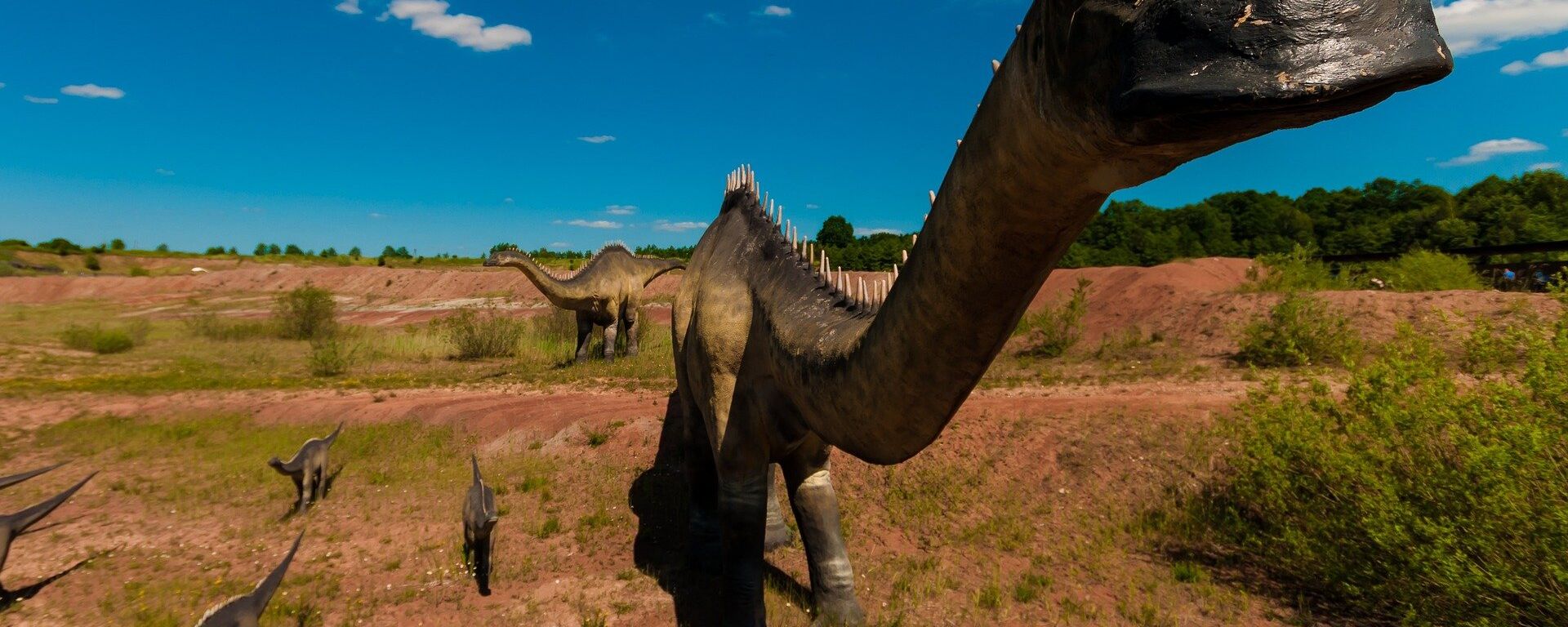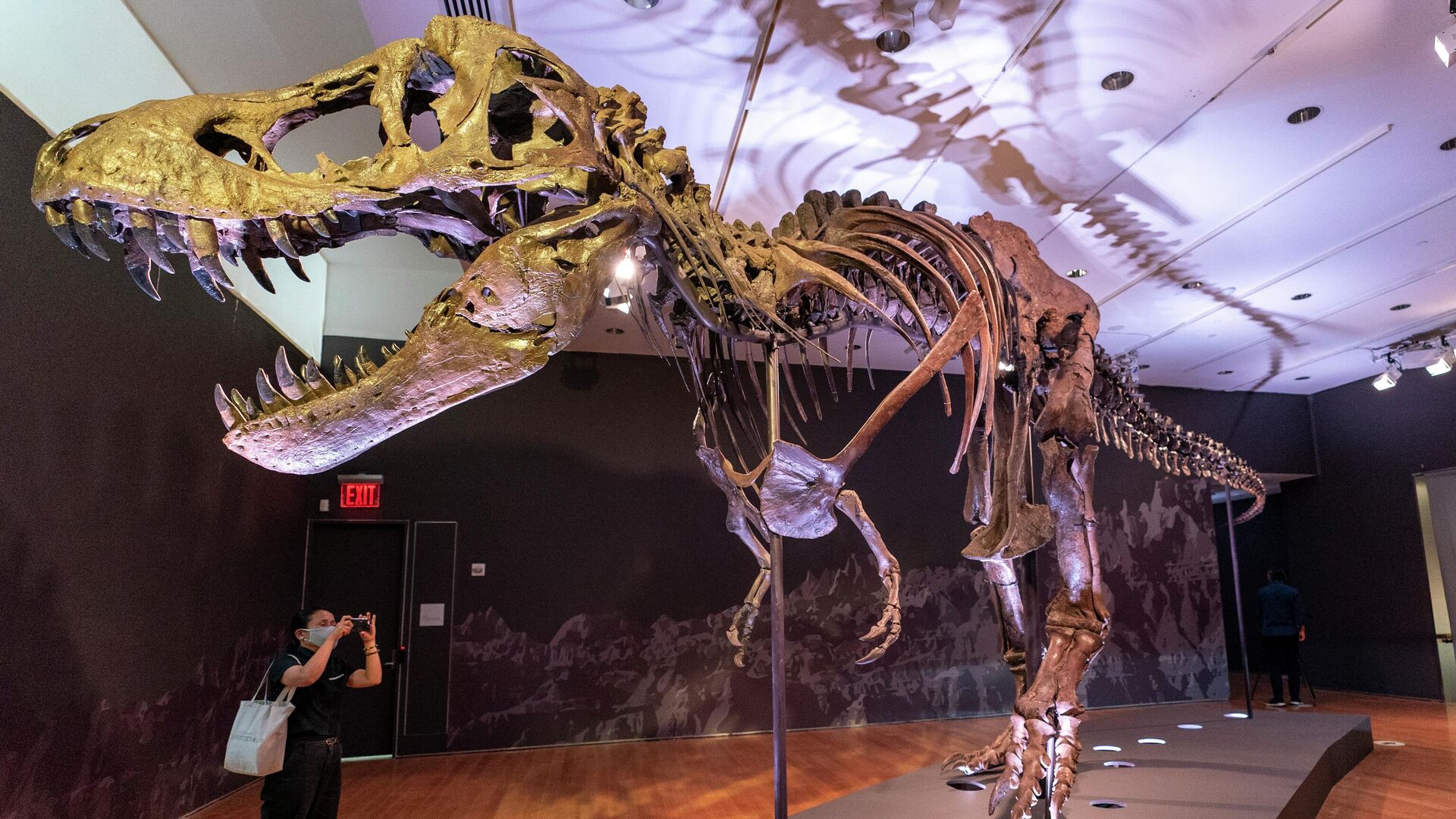https://sputnikglobe.com/20220708/new-study-explains-huge-predatory-dinosaurs-massive-skulls-and-tiny-arms---1097111351.html
New Study Explains Huge Predatory Dinosaurs’ ‘Massive’ Skulls and Tiny Arms
New Study Explains Huge Predatory Dinosaurs’ ‘Massive’ Skulls and Tiny Arms
Sputnik International
Paleontologists initially discovered the remains of the Meraxes dinosaur in South America in 2012. They have spent the last ten years extracting, preparing... 08.07.2022, Sputnik International
2022-07-08T15:26+0000
2022-07-08T15:26+0000
2022-08-06T11:18+0000
us
dinosaurs
study
researchers
skull
argentina
https://cdn1.img.sputnikglobe.com/img/07e6/07/08/1097108745_0:0:3071:1728_1920x0_80_0_0_b7807123bcf126af9a49023d267f65b9.jpg
The discovery of a new, huge, meat-eating dinosaur dubbed Meraxes gigas offered many clues about the evolution and biology of these extinct reptiles, specifically, why they had such big skulls and tiny arms, a new study has revealed.The study, which was recently published in the journal Current Biology, was conducted by a team co-led by University of Minnesota researcher Peter Makovicky and his Argentinean colleagues Sebastian Apesteguia and Juan Canale.The researchers explained that Meraxes is part of the group of giant carnivorous dinosaurs that also includes Giganotosaurus and Tyrannosaurus rex.According to the scientists, the discovery of Meraxes helped them realize that all three reptiles grew in similar ways, and that as they evolved, their skulls grew larger and their arms progressively shorter.Actually, the discovery of Meraxes is not that new given the fact that the reptile’s remains were initially found in South America’s Patagonia region in 2012. Since, researchers have meticulously analyzed the specimen. Not the largest reptile of its family, Meraxes, however, could make your eyebrows raise with its imposing proportions. The paleontologists suggest that the dinosaur measured around 36 feet (10 metres) from snout to tail and weighed about 9,000 pounds (4,000 kg). Just for comparison, African elephants, the largest of all land animals, weigh between 1,800 and 6,300 kg.
https://sputnikglobe.com/20211023/stunning-discovery-of-193-million-year-old-dinosaur-eggs-sheds-new-light-on-reptiles-early-species-1090157221.html
argentina
Sputnik International
feedback@sputniknews.com
+74956456601
MIA „Rossiya Segodnya“
2022
Oleg Burunov
https://cdn1.img.sputnikglobe.com/img/07e4/09/0b/1080424846_0:0:2048:2048_100x100_80_0_0_3d7b461f8a98586fa3fe739930816aea.jpg
Oleg Burunov
https://cdn1.img.sputnikglobe.com/img/07e4/09/0b/1080424846_0:0:2048:2048_100x100_80_0_0_3d7b461f8a98586fa3fe739930816aea.jpg
News
en_EN
Sputnik International
feedback@sputniknews.com
+74956456601
MIA „Rossiya Segodnya“
Sputnik International
feedback@sputniknews.com
+74956456601
MIA „Rossiya Segodnya“
Oleg Burunov
https://cdn1.img.sputnikglobe.com/img/07e4/09/0b/1080424846_0:0:2048:2048_100x100_80_0_0_3d7b461f8a98586fa3fe739930816aea.jpg
us, dinosaurs, study, researchers, skull, argentina
us, dinosaurs, study, researchers, skull, argentina
New Study Explains Huge Predatory Dinosaurs’ ‘Massive’ Skulls and Tiny Arms
15:26 GMT 08.07.2022 (Updated: 11:18 GMT 06.08.2022) Paleontologists initially discovered the remains of the Meraxes dinosaur in South America in 2012. They have spent the last ten years extracting, preparing, and analyzing the previously unknown specimen, which weighed a whopping 9,000 pounds (4,000 kilograms).
The discovery of a new, huge, meat-eating dinosaur dubbed Meraxes gigas offered many clues about the evolution and biology of these extinct reptiles, specifically, why they had such big skulls and tiny arms,
a new study has revealed.
The study, which was recently published in the journal Current Biology, was conducted by a team co-led by University of Minnesota researcher Peter Makovicky and his Argentinean colleagues Sebastian Apesteguia and Juan Canale.
The researchers explained that Meraxes is part of the group of giant carnivorous dinosaurs that also includes Giganotosaurus and Tyrannosaurus rex.

23 October 2021, 14:54 GMT
According to the scientists, the discovery of Meraxes helped them realize that all three reptiles grew in similar ways, and that as they evolved, their skulls grew larger and their arms progressively shorter.
“We shouldn’t worry so much about what the arms are being used for, because the arms are actually being reduced as a consequence of the skulls becoming massive. Whatever the arms may or may not have been used for, they’re taking on a secondary function since the skull is being optimized to handle larger prey,” Macovicky pointed out.
Actually, the discovery of Meraxes is not that new given the fact that the reptile’s remains were initially found in South America’s Patagonia region in 2012. Since, researchers have meticulously analyzed the specimen.
Not the largest reptile of its family, Meraxes, however, could make your eyebrows raise with its imposing proportions. The paleontologists suggest that the dinosaur measured around 36 feet (10 metres) from snout to tail and weighed about 9,000 pounds (4,000 kg). Just for comparison, African elephants, the largest of all land animals, weigh between 1,800 and 6,300 kg.



